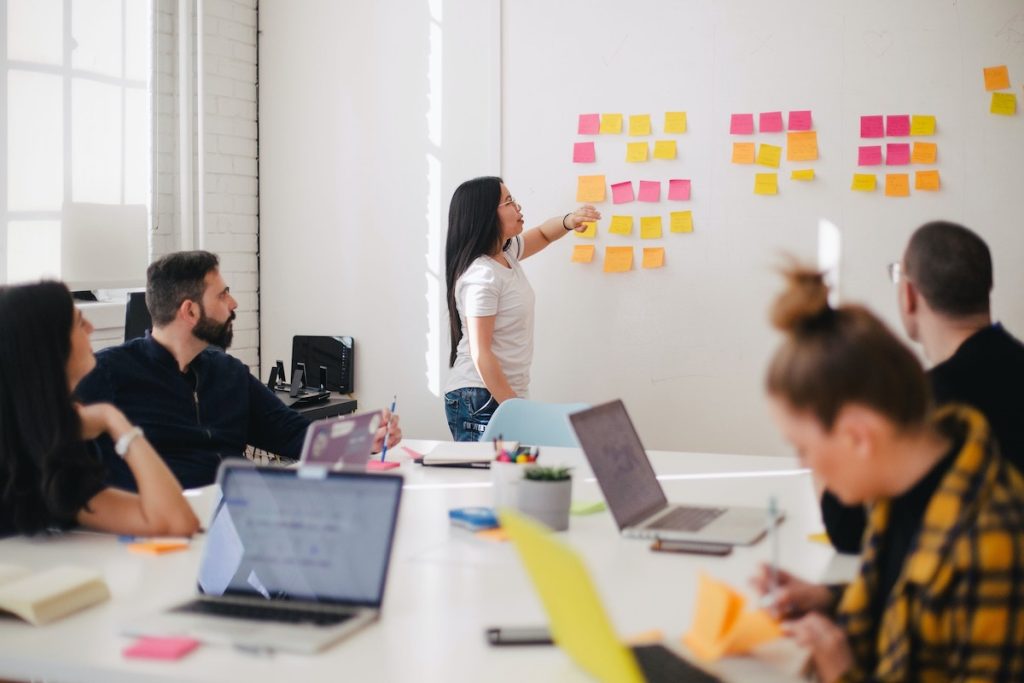The way we use our body language can have a huge impact on how we are perceived by others. It can influence the way people think about us and even affect the outcome of important conversations or situations.
We may not realize it, but subtle body movements like posture, facial expressions, and hand gestures send powerful messages to those around us.
That’s why it’s so important to be aware of our body language and understand what kind of message it conveys.
We’ll explore the importance of body language in everyday life and look at some tips for improving your nonverbal communication skills.
Why Body Language Matters
Body language plays an important role in our interactions with others.
It conveys a wide range of information, from how we feel about someone to how engaged we are in a conversation.
For example, when we look somebody in the eyes and maintain good eye contact, it communicates that we’re paying attention and interested in what they have to say.
Similarly, smiling or nodding while listening conveys approval and understanding.
Beyond communicating our feelings though, our body language can also influence the way others perceive us.
Studies have shown that people make judgments about us within seconds of seeing us — and much of this is based on nonverbal cues like posture and facial expressions.
Using effective body language can help establish trust between two people, create a sense of comfort, and even increase respect.
How Can Body Language Make Us More Attractive?
Body language can make us more attractive in several ways.
When we use body language that is open, approachable, and confident, it conveys to others that we are friendly and trustworthy.
People who use good body language convey their interest in a conversation through cues such as eye contact, leaning forward, and active listening.
Good body language also conveys a sense of openness and vulnerability, which can make others feel more comfortable in our presence.
People who use good body language often appear more confident and attractive to potential partners.
Using positive body language can make us more likely to be perceived as honest and sincere.
The Power Of Positive Nonverbal Communication
Positive body language can have a powerful impact on our interactions with others.
People are more likely to trust and cooperate with someone who displays open and friendly nonverbal cues, such as a firm handshake or a genuine smile.
Positive body language can help create an atmosphere of comfort and ease in any situation and can be used to make someone feel welcome or appreciated, to establish mutual understanding, or even to show respect for another person’s opinion.
Good posture is also surprisingly important when it comes to making a good impression.
Studies have shown that those who stand tall and look directly at the person they’re talking to are perceived as being more confident and competent than those who slouch or avert their gaze.
Mirroring the gestures and postures of the person you’re talking to can help create an atmosphere of connection and harmony between two people by demonstrating mutual understanding.
We should strive to use facial expressions that convey warmth and interest throughout our conversations.
Showing genuine emotion in our facial expressions helps build trust with the person we’re speaking with, whether it be through a friendly smile or nodding along in agreement.
In conclusion, mastering positive body language techniques can go a long way in helping us communicate effectively with those around us while simultaneously boosting our self-confidence.
Common Types Of Body Language
Body language conveys a vast array of information to those around us.
Common forms of body language include facial expressions, gestures, posture, and tone of voice.
Facial expressions are often a key indicator of our emotions, with smiles and frowns communicating happiness and sadness respectively.
Gestures can also be used to communicate, with hand movements such as pointing and waving helping to convey messages or draw attention to specific points.
Posture can also have a significant impact on the way we are perceived by others; those who stand tall and look directly at the person they’re speaking to are usually seen as more confident than those who slouch or avert their gaze.
Our tone of voice acts as an important nonverbal cue when it comes to communication. The pitch, volume, and speed at which we speak can all influence how our words are received by others.
For instance, speaking in an upbeat yet authoritative manner can signal authority and confidence while talking softly or slowly could indicate shyness or passivity.
Using a loud voice that is full of energy might make someone come across as enthusiastic or excited about something whereas speaking in a monotone voice may give off the impression that one is uninterested or apathetic.
Mastering the use of body language is essential if we wish to effectively communicate with those around us while also building trust and establishing rapport in relationships both personal and professional.
By becoming aware of our nonverbal cues and making conscious efforts to improve them over time, we can become better communicators overall which can lead to greater success both professionally and personally.
Tips For Improving Your Nonverbal Communication
One way to improve one’s nonverbal communication is by increasing self-awareness.
Taking note of one’s body language as well as the body language of others can help to better understand how our behavior is influencing interactions.
It is important to be mindful of the way we phrase our words, the tone in which we speak, and the gestures and postures that we use when communicating with someone else.
This includes being aware of any subtle expressions or signals that might not be picked up on right away, such as tightening the jaw or avoiding eye contact.
It can be beneficial to practice in front of a mirror to become familiar with different facial expressions and be more aware of how our body language might come off to others.
Learning about different types of body language is also an essential step toward improving your nonverbal communication skills.
Working on developing a good posture, for instance, can make you appear more confident and capable during conversations.
Similarly, studying different types of hand gestures and facial expressions can help ensure that your messages are clear and concise even without words.
Understanding cultural differences in body language can help avoid any potential misunderstandings when communicating with people from different backgrounds.
Final Word
Improving one’s nonverbal communication can be immensely beneficial in both personal and professional interactions.
Through greater self-awareness of our body language, we can work on conveying more positive messages to others, such as confidence and enthusiasm, while also being mindful of how our words and actions might be interpreted by those around us.
This can help us to make better connections with those we interact with and foster closer relationships over time.
With practice and patience, it is possible to become a more effective communicator through nonverbal cues.
Photo by Jason Goodman on Unsplash





